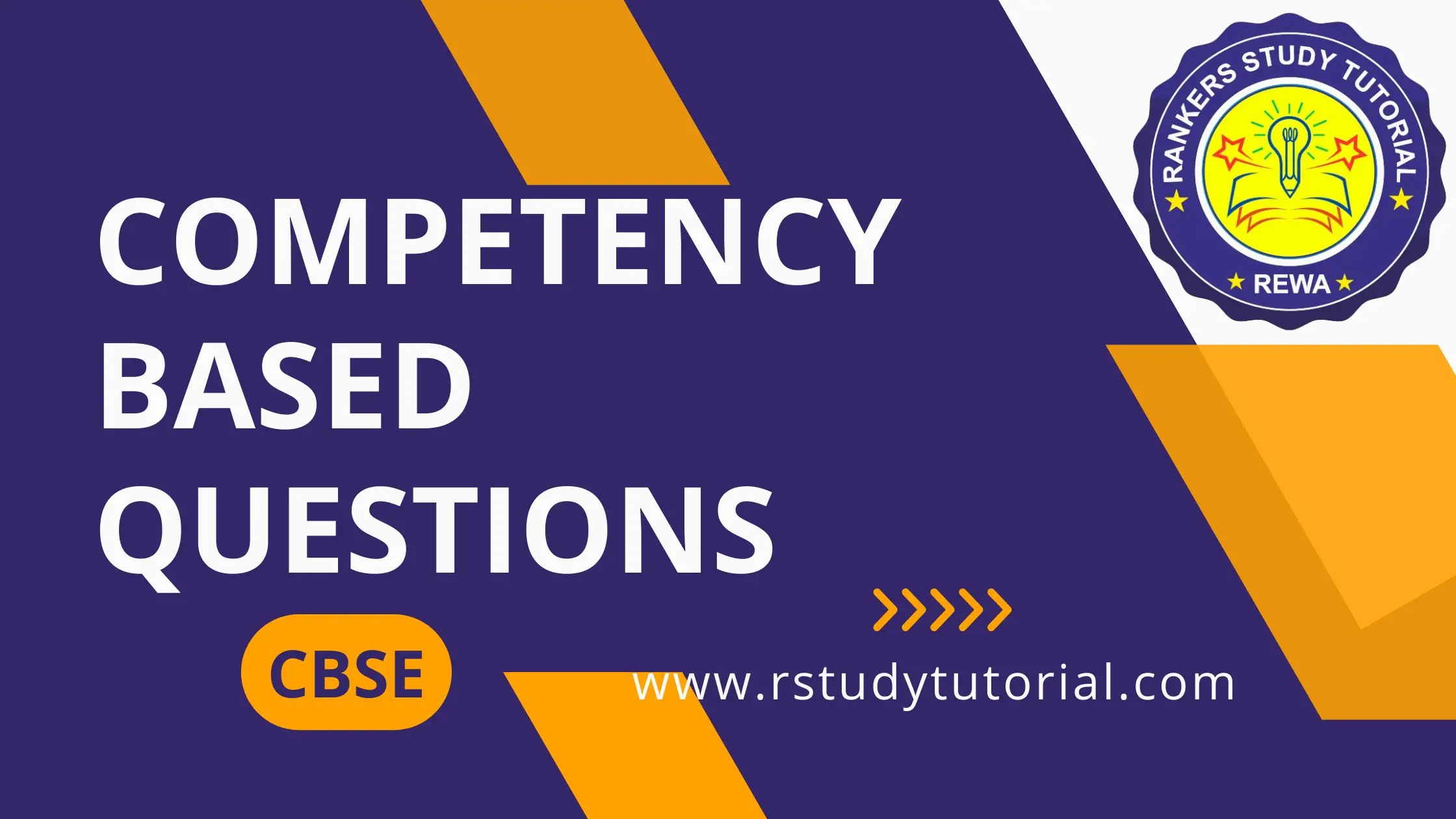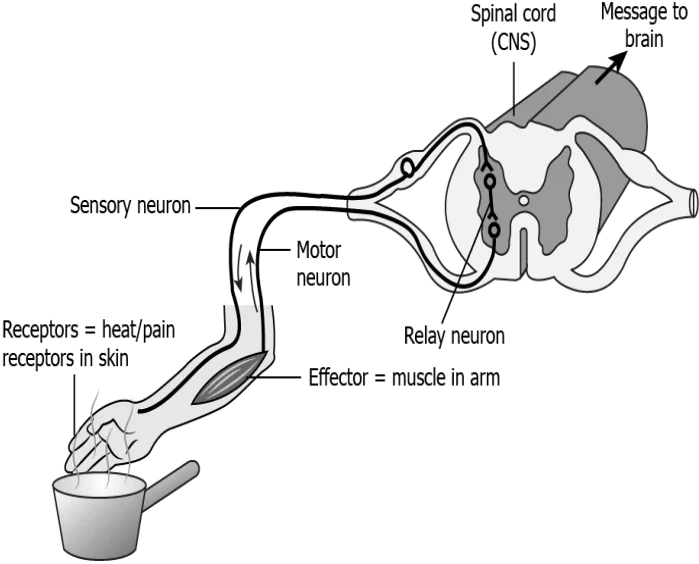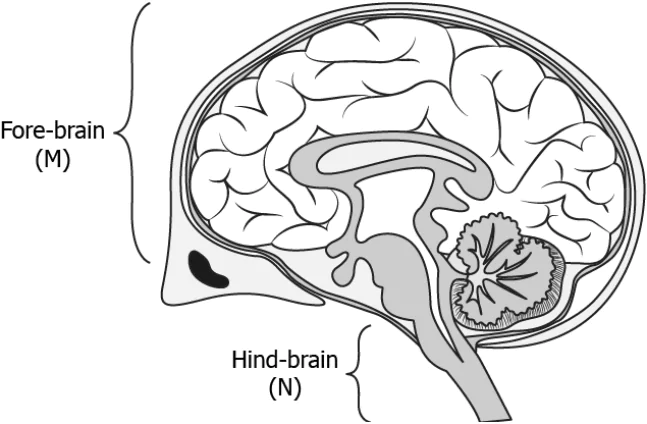Hint: Draw the structure & explain the functioning of a neuron, in order to explain how electrical signals travel in human body.
Question.1. The image shows the structure of a neuron.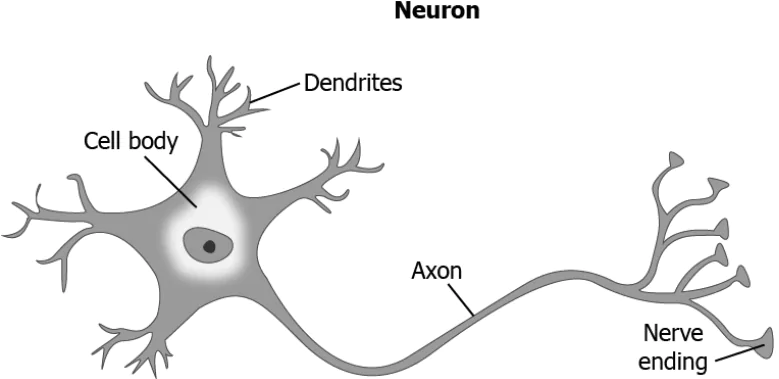
(a) Dendrite → cell body → axon → nerve ending
(b) Dendrite → axon → cell body → nerve ending
(c) Axon → dendrite → cell body → nerve ending
(d) Axon → cell body → dendrite → nerve ending
Question.2. The image shows structure of a neuron.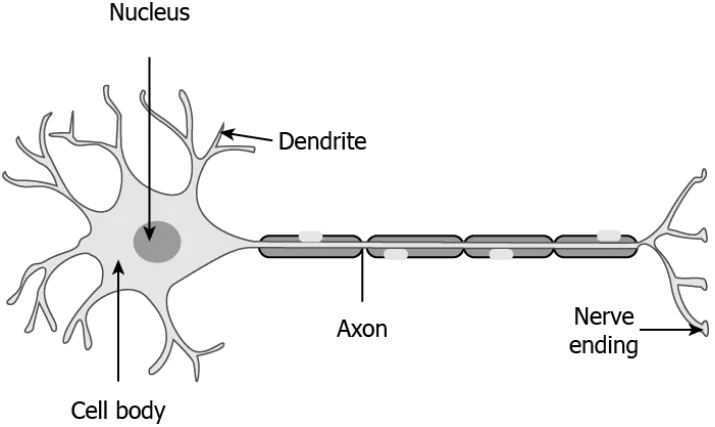
(a) olfactory receptors → dendritic tip of a nerve cell → axon → nerve ending → release of signal dendritic tip of other nerve cell
(b) olfactory receptors → dendritic tip of a nerve cell → axon → cell body → release of signal dendritic tip of other nerve cell
(c) gustatory receptors → dendritic tip of a nerve cell → cell body → axon → release of signal dendritic tip of other nerve cell
(d) gustatory receptors → dendritic tip of a nerve cell → axon → cell body → release of signal dendritic tip of other nerve cell
Ans.1. (a) Dendrite → cell body → axon → nerve ending
Ans.2. (a) olfactory receptors → dendritic tip of a nerve cell → axon → nerve ending → release of signal dendritic tip of other nerve cell
Hint: Outline the working of a reflex arc, in order to explain how reflex actions take place in humans.
Question.3. Which option correctly shows the sequence of events that occur when we touch a hot utensil?
(a) 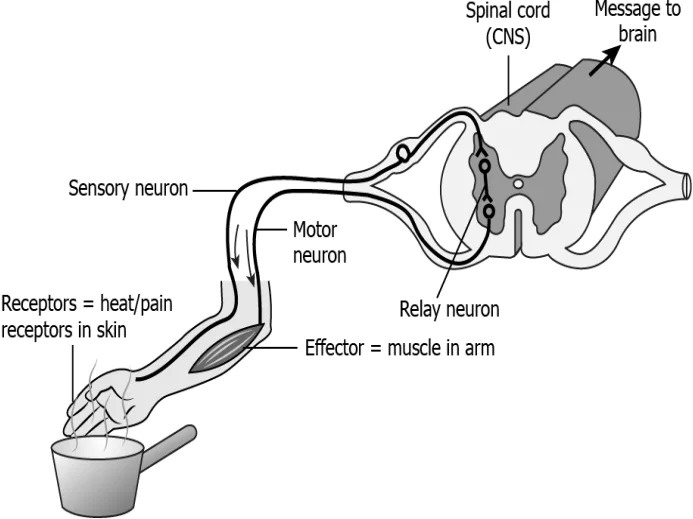
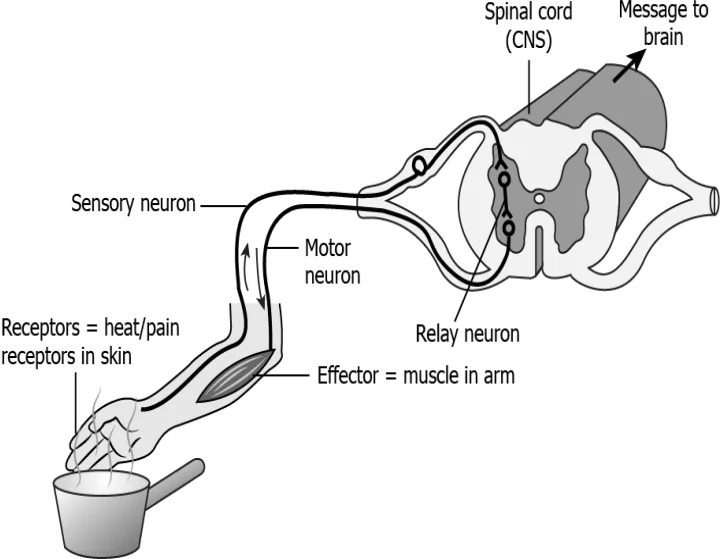
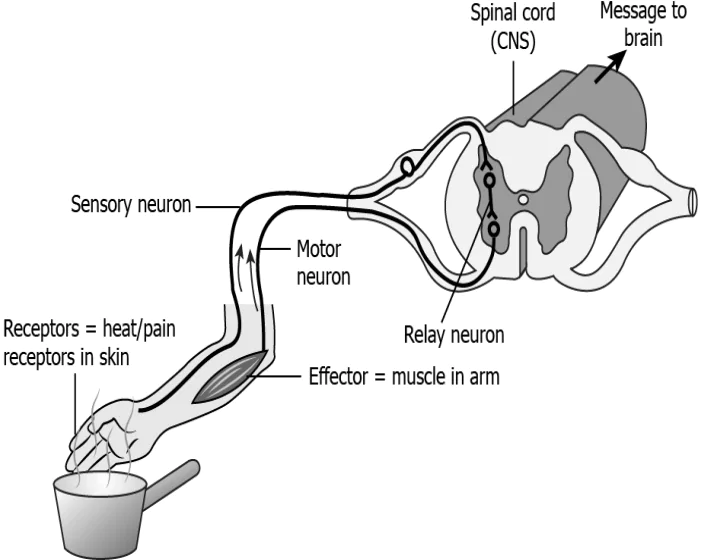
Question.4. Which option correctly shows the order of events when a bright light is focused on our eyes?
(a) Bright light → receptors in eyes → sensory neuron → spinal cord → motor neurons → eyelid closes
(b) Bright light → receptors in eyes → spinal cord → sensory neuron → motor neurons → eyelid closes
(c) Bright light → receptors in eyes → sensory neuron → motor neurons → spinal cord → eyelid closes
(d) Bright light → receptors in eyes → spinal cord → motor neurons → sensory neuron → eyelid closes
Ans.3. (b) 
Hint: Illustrate the location and functions of different parts of human brain, in order to understand working of human brain.
Question.5. The image shows the labelled structure of a brain.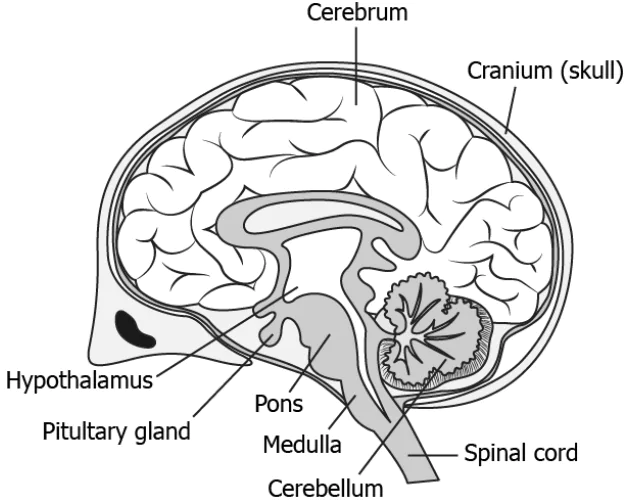
(a) spinal cord, skull, hypothalamus
(b) cord, skull, cerebrum
(c) Pons, medulla, cerebellum
(d) pons, medulla, pituitary
Question.6. Which option illustrates the location of centre that controls the feelings associated with hunger (M) and the centre that allows a person to walk in a straight line (N)?
(a) 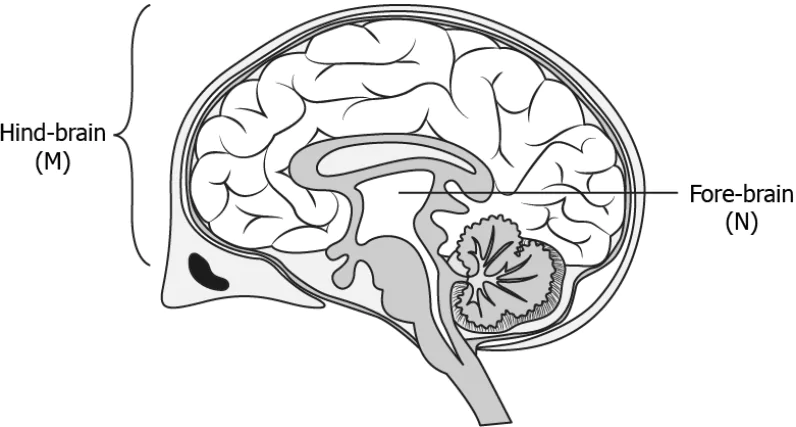
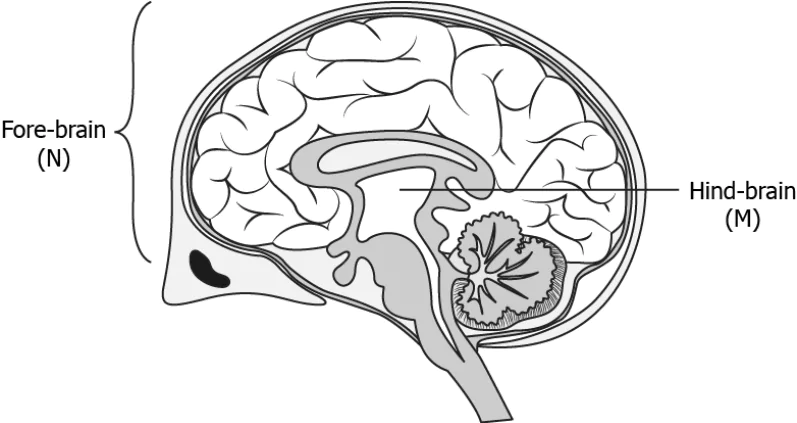
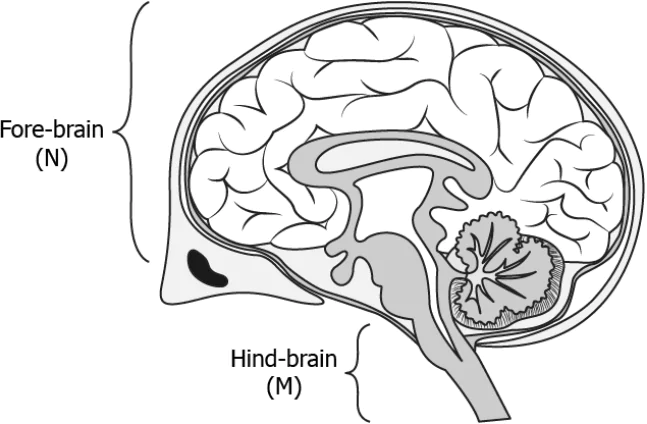
Ans.5. (c) Pons, medulla, cerebellum
Ans.6. (d)
Hint: Examine tropic movements in plants, in order to understand how plants respond to environmental triggers like light, gravity, water.
Question.7. When we touch the leaves of “touch-me-not” plant, they began to fold up and droop. How does the plant communicate the information of touch?
(a) The plant uses electrical signals to transfer information from external environment to cells.
(b) The plant uses electrical – chemical signals to transfer information from cell to cell.
(c) The plant uses electrical – chemical signals to transfer information from tissue to specialized cells.
(d) The plant uses electrical signals to transfer information from cell to specialized tissues.
Question.8. Akshay potted some germinated seeds in a pot. He put the pot in a cardboard box that was open from one side. He keeps the box in a way that the open side of box faces sunlight near his window. After 2-3 days he observes the shoot bends towards light as shown in image.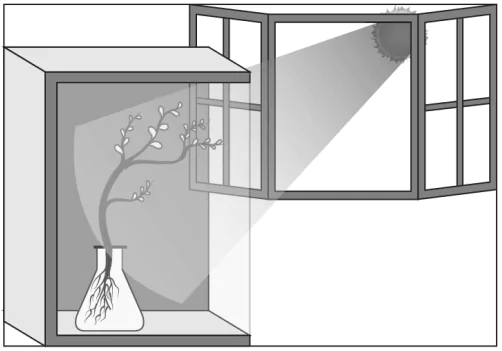
(a) Geotropism
(b) Phototropism
(c) chemotropism
(d) hydrotropism
Ans.7. (b) The plant uses electrical – chemical signals to transfer information from cell to cell.
Ans.8. (b) Phototropism
Hint: Discuss limitations of electrical impulses, in order to outline the importance and use of hormones.
Question.9. What is a likely limitation of electric impulses?
(a) The electric impulses travel slowly between the neurons.
(b) The electric impulses allow signal transmission in multiple directions.
(c) The electric impulses are transmitted to only those body parts that are connected to neurons.
(d) The electric impulses once generated needs to be transmitted quickly within the body.
Question.10. Organisms depend on hormones as well as electric impulses for the transmission of signals from brain to rest of the body. What can be a likely advantage of hormones over electric impulses?
(a) It is secreted by all types of cells present in the body.
(b) It is secreted by stimulated cells and reaches all cells of the body.
(c) It is relayed to the target organ at a faster rate than electric impulses.
(d)It does not depend on an external stimulus to be generated in the cells.
Ans.9. (c) The electric impulses are transmitted to only those body parts that are connected to neurons.
Ans.10. (b) It is secreted by stimulated cells and reaches all cells of the body.
Hint: Illustrate the function of endocrine glands in human body, in order to understand functioning of hormones.
Question.11. What is the function of pituitary gland?
(a) to develop sex organs in males
(b) to stimulate growth in all organs
(c) to regulate sugar and salt level in the body
(d) to initiate metabolism in the body
Question.12. A female is suffering from irregular menstrual cycle. The doctor prescribed her some hormonal tablets. Which option shows the hormone she lacks in her body from the endocrine gland?
(a) oestrogen
(b) testosterone
(c) adrenalin
(d) thyroxin
Ans.11. (b) to stimulate growth in allorgans
Ans.12. (a) oestrogen

